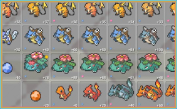Selecting Players: In Immaculate Grid Baseball, the primary objective is to pick players who meet the criteria for each cell, aligning with both the corresponding row and column. Pay close attention to the requirements and think strategically to make the best possible choices.
Nine Guesses Limit: You have nine guesses to complete the grid. Each guess you make, whether correct or not, will be counted as one of your attempts. Thus, every decision you make must be thoughtful and deliberate.
Daily Grid Refresh: Excitingly, a new grid awaits you every day at 9:00 AM ET. This daily refresh ensures that each puzzle presents a fresh and unique challenge, keeping players engaged and returning for more brain-teasing fun.
No Repeated Players: Keep in mind that players cannot be used twice within the same grid. It adds an extra layer of complexity, requiring players to explore different options for each cell.
Active and Inactive Players: The game allows you to choose players who are either active or inactive. This feature broadens your pool of potential selections, giving you greater flexibility in assembling your grid.
Franchise History Qualifications: Be aware that previous names of franchises will qualify. For instance, Expos players will match for the Nationals, and Browns players will match for the Orioles, considering their complete franchise history.
Player and Team Cell: To qualify for the player and team cell, a player must have played at least one major league game for that specific team, whether in the regular season or playoffs.
Team and Award Cell: In this case, a player must have won the award during a season they appeared for that team. The exception is All-Star selections, which are associated with a single team only. Players who played for multiple teams but won awards for a specific team can match for that team's award.
Hall of Famers Inclusion: Hall of Famers can be inducted from any category (player, team, umpire, executive/pioneer) but must have played a major league game for the team in question.
World Series Winners: To qualify as a World Series winner, a player must have appeared in a postseason game (or be on the postseason roster) for the team during the World Series-winning season.
Team and Season Stat: To meet the criteria for team and season stat, the player must have recorded the stat while on that team. For players who played on multiple teams in a season, the stat must have been achieved with that specific team.
Team and Career Stat: For team and career stat, a player simply needs to have played for the team at any point in their career. Career rate stats have minimums of 3,000 plate appearances and 1,000 innings.
Rate Stat Qualification: If one of the stats is a rate stat (e.g., BA, ERA), the player must have qualified for the season’s rate stat leaderboards.
Two Stat/Awards Cells: For two stat/awards cells, the player does not necessarily need to accomplish the stats/awards in the same season. For example, a player can qualify for both 40+ HR and Rookie of the Year in different seasons.
































